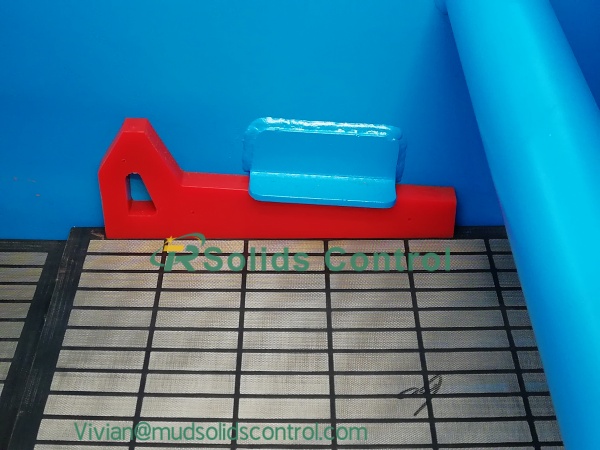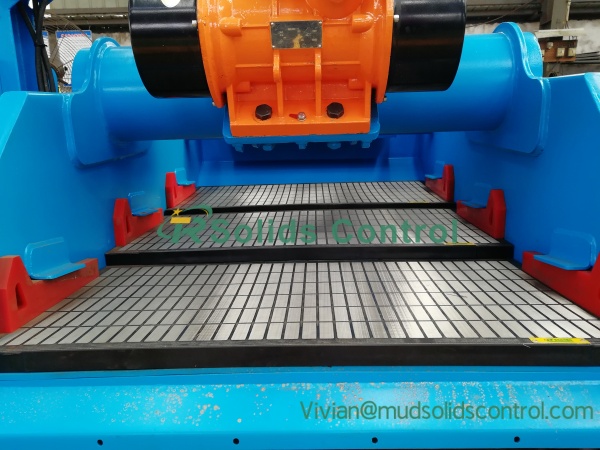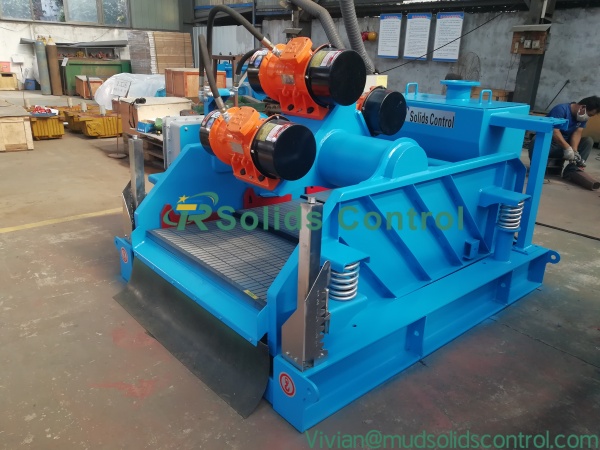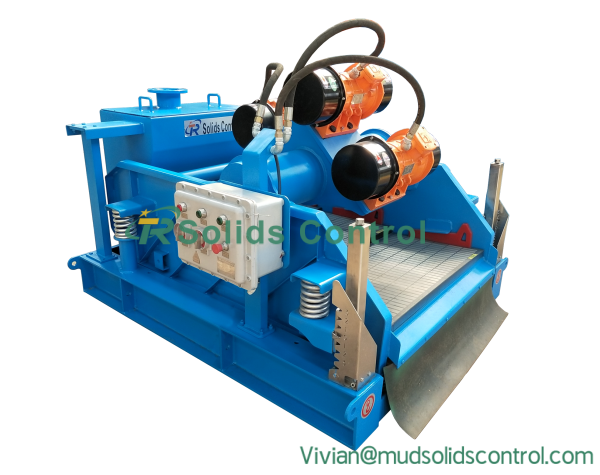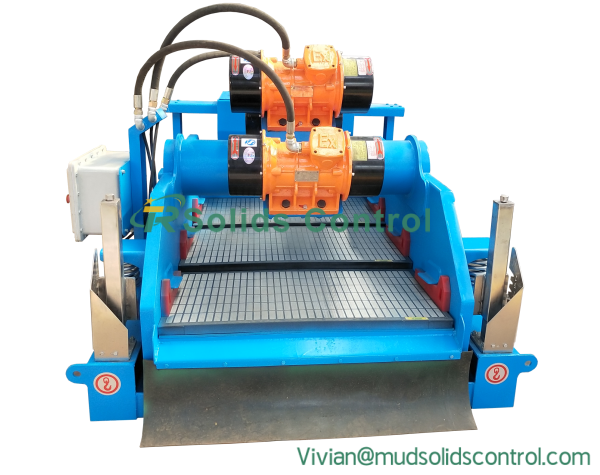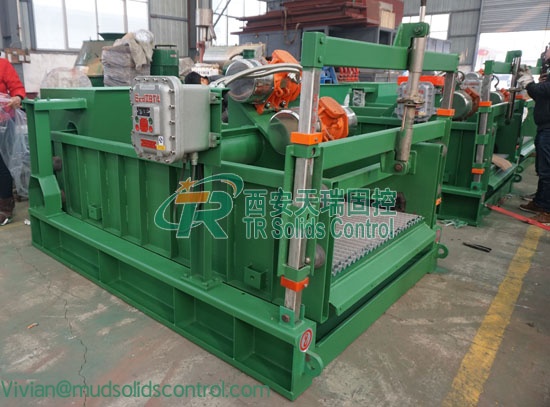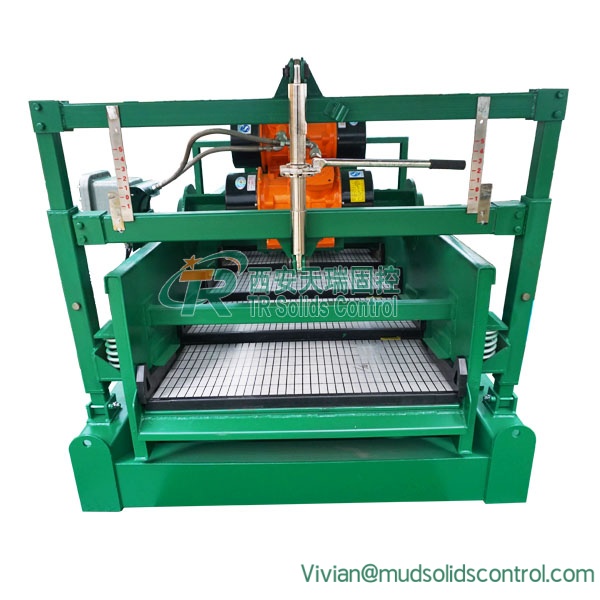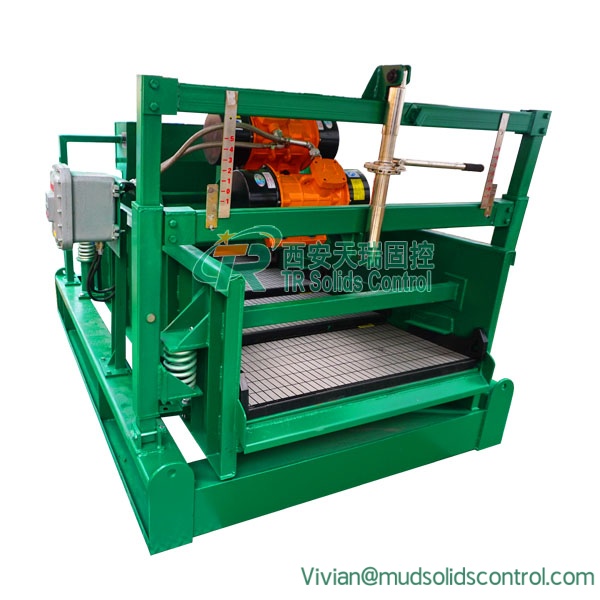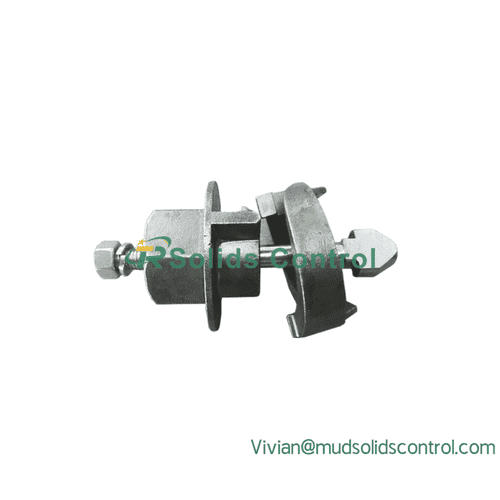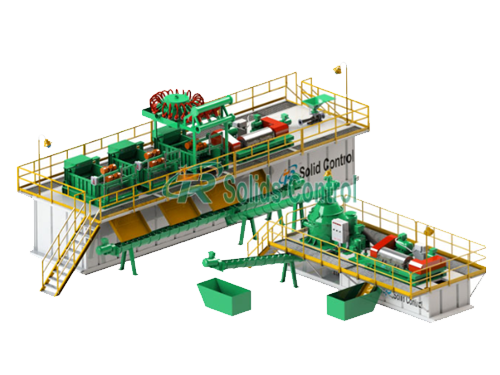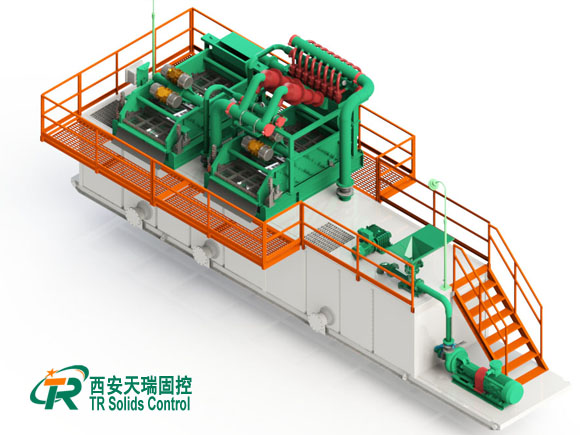Tag Archives: TR Solid Control
Reliable Shale Shaker Spare Parts Wholesale for Efficient Solids Control
Efficient operation of a shale shaker depends greatly on the quality of its components. As demand grows in the oilfield and HDD industries, the need for shale shaker spare parts wholesale solutions has also increased. Choosing reliable parts suppliers ensures stable performance, reduced downtime, and long equipment life in solids control systems.
High-quality shale shaker parts not only help maintain optimal vibration performance but also protect downstream equipment and improve the overall mud treatment process.
In drilling operations, the shale shaker serves as the first-stage solids control equipment. It removes large solids from drilling fluids and keeps the mud reusable. Over time, its key components—such as screens, springs, seals, and motors—experience wear and require replacement.For operators, a reliable wholesale supplier ensures consistent part quality and timely delivery for long-term drilling projects.
In the shale shaker spare parts wholesale market, key components include:
- Shaker screens: The most critical wear part, available in composite frame or steel frame designs. Mesh sizes range from API 20 to API 325 for various filtration needs.
- Rubber springs and float mounts: Absorb vibration and maintain deck stability.
- Tensioning assemblies and wedges: Secure screens firmly to prevent leakage.
- Vibration motors: Provide stable motion for efficient solids separation.
- Oil seals and gaskets: Ensure leak-free operation under high temperature and pressure.
- Screen boxes and side panels: Structural parts supporting consistent shaker performance.
Selecting genuine and compatible parts directly impacts the performance and efficiency of the entire solids control system.
Purchasing shale shaker spare parts in bulk brings multiple advantages for drilling contractors and distributors:
- Cost Efficiency: Lower unit prices through volume purchasing.
- Quality Consistency: Uniform specifications across all replacement parts.
- Inventory Stability: Ensure timely maintenance without operational delays.
- OEM Compatibility: Suitable for major brands such as TR, Derrick, Swaco, and NOV.
Reliable wholesale partners help operators manage long-term projects with stable equipment support and reduced procurement costs.
When selecting a shale shaker spare parts wholesale partner, consider the following:
- Product compatibility: Ensure parts match your shaker model and screen design.
- Material quality: Choose corrosion-resistant materials like stainless steel or composite.
- Delivery capacity: Confirm reliable logistics and consistent stock availability.
- Technical support: Look for suppliers offering installation guidance and after-sales service.
The efficiency of your drilling solids control system depends on the quality and reliability of shale shaker spare parts. Partnering with a professional wholesale supplier allows you to reduce costs, maintain consistent performance, and extend equipment lifespan.
TR Solids Control is a professional manufacturer and wholesale supplier of shale shaker spare parts in China. The company provides a full range of accessories suitable for various drilling rigs, mud treatment systems, and environmental projects.With advanced production technology and strict quality control, TR Solids Control ensures each spare part meets international standards and supports stable equipment performance.
As a trusted manufacturer, TR Solids Control provides durable and well-engineered shale shaker accessories for global customers — helping them achieve efficient, safe, and sustainable drilling operations.
How Shale Shakers Improve the Efficiency of Oil Drilling Mud Treatment Equipment
In every drilling operation, oil drilling mud treatment equipment is essential for maintaining the quality of drilling fluids and ensuring smooth, cost-effective performance. Among these systems, the shale shaker is the first and most critical stage of solids control — removing large drill cuttings from the circulating mud before it proceeds to desanders, desilters, and centrifuges.
By improving mud clarity and reducing wear on downstream equipment, the shale shaker directly determines the efficiency and lifespan of the entire mud treatment process. Understanding its function and features is key to optimizing solids control systems.
1. The Core Role of the Shale Shaker in Mud Treatment Systems
The shale shaker acts as the primary solids separation device within the oil drilling mud treatment equipment. It operates by vibrating a screen or mesh surface, allowing drilling fluid to pass through while capturing larger solid particles.
Key functions include:
- Removing Drill Cuttings: Preventing solids accumulation in the drilling mud.
- Maintaining Mud Properties: Ensuring stable density and viscosity for efficient drilling.
- Protecting Downstream Equipment: Reducing the load on desanders, desilters, and centrifuges.
A properly configured shale shaker ensures cleaner mud recirculation and lowers the overall operating cost of the drilling system.
2. How Shale Shaker Design Affects Performance
Key Design Elements Include:
- Vibration Motors: Dual high-efficiency motors provide stable and adjustable vibration strength.
- Screen Area: Larger screen areas handle greater flow rates.
- Screen Type: Composite frame screens improve durability and filtration accuracy.
- Deck Angle Adjustment: Allows operators to adapt to different mud conditions.
3. Advantages of High-Quality Shale Shakers in Drilling Operations
Investing in a well-designed shale shaker brings significant operational benefits to oil drilling mud treatment equipment systems:
- Improved Separation Efficiency: Removes solids faster and more completely.
- Reduced Mud Loss: Saves expensive drilling fluids through precise control.
- Extended Equipment Lifespan: Less wear on pumps, desanders, and centrifuges.
- Lower Maintenance Costs: Simplified screen replacement and vibration control systems reduce downtime.
- Energy Efficiency: Advanced motors and optimized design minimize power consumption.
These advantages make the shale shaker one of the most cost-effective tools in the entire solids control process.
4. TR Solids Control – A Reliable Supplier of Oilfield Mud Treatment Equipment
TR Solids Control is a professional manufacturer and supplier of oil drilling mud treatment equipment in China. The company specializes in designing and producing shale shakers, mud cleaners, desanders, desilters, vacuum degassers, and decanter centrifuges for oil & gas drilling, HDD, and environmental projects.With years of experience and strict quality control, TR has become a trusted partner for customers worldwide seeking efficient and durable solids control solutions.
5. Choosing the Right Shale Shaker for Your Mud Treatment System
Selecting a suitable shale shaker depends on several factors, such as:
- Drilling Depth and Mud Volume
- Flow Rate and Solids Concentration
- Power Supply and Motor Type
- Screen Mesh Size and Material
- Environmental and Space Requirements
By consulting with experienced manufacturers like TR Solids Control, operators can configure a customized oil drilling mud treatment equipment package that meets their specific drilling needs.
Conclusion
The shale shaker is the foundation of every efficient oil drilling mud treatment equipment system. Its performance determines the effectiveness of solids control and the quality of recycled drilling fluids. Choosing a reliable, high-performance shale shaker not only boosts drilling efficiency but also reduces operational costs and environmental impact.
For dependable shale shakers and complete mud treatment systems, TR Solids Control continues to deliver professional solutions trusted by oilfield operators worldwide.
Reliable Oilfield Solids Control Shale Shaker Manufacturer for Efficient Drilling Operations
TR Shale Shaker – Reliable Oilfield Solids Control Shale Shaker Manufacturer
As a professional oilfield solids control shale shaker manufacturer, TR Solids Control is dedicated to delivering advanced shale shaker solutions that ensure high efficiency and stable performance in drilling operations. The TR shale shaker is a key piece of solids control equipment used to separate drilling cuttings from mud, improving fluid quality and extending the life of downstream equipment such as desanders, desilters, and centrifuges.
High-Efficiency Design and Robust Construction
The TR shale shaker features a linear motion design with adjustable G-force and deck angle, allowing operators to handle various drilling conditions with maximum separation performance. Its stainless steel screen frame, strong vibration motor, and wear-resistant components guarantee durability and low maintenance costs, even under harsh oilfield environments.
Key Advantages of TR Shale Shaker
- High Processing Capacity: Up to 140 m³/h depending on model and mud properties.
- Efficient Solid-Liquid Separation: Multi-layer composite shaker screens ensure precise particle separation.
- Adjustable Vibration Strength: Optimized for different drilling mud densities.
- Easy Maintenance: Quick-lock screen system and anti-corrosion coating for long service life.
- Wide Application: Suitable for oil and gas drilling, HDD, CBM, and geothermal projects.
Why Choose TR as Your Shale Shaker Manufacturer
As an experienced oilfield solids control shale shaker manufacturer, TR Solids Control not only provides reliable shale shaker units but also offers complete solids control systems, including mud cleaners, centrifuges, pumps, and mixing hoppers. With ISO-certified production, strict quality inspection, and excellent after-sales service, TR ensures every customer receives equipment that meets international standards.
Conclusion
If you’re looking for a dependable oilfield solids control shale shaker manufacturer, TR Solids Control is your trusted partner. Our TR shale shaker combines advanced design, consistent performance, and global service support — making it an ideal choice for modern drilling operations.
How to Choose the Right Shale Shaker Screen for Your Operation
Selecting the correct shale shaker screen is one of the most important decisions in any drilling operation. The screen directly affects solids control efficiency, drilling fluid quality, and overall equipment performance. With so many screen types and configurations available, understanding how to choose the right shale shaker screen ensures maximum productivity and lower operating costs.
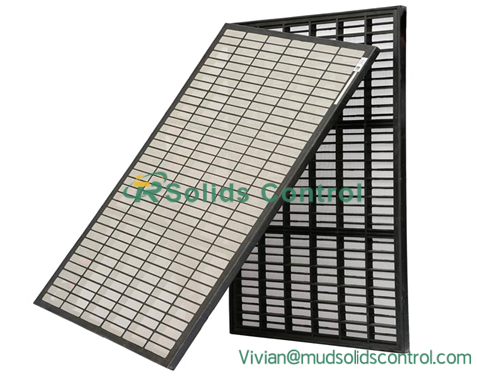
1. Understand Mesh Size and API Rating
Mesh size determines the size of particles that can pass through the screen. Shaker screens are classified using API (American Petroleum Institute) standards, which indicate their separation capability.
- Coarse screens (API 20–80): Used for larger solids in early-stage drilling.
- Medium screens (API 100–150): Suitable for general solids control.
- Fine screens (API 170–325): Used for fine solids and high-performance filtration.
Selecting the proper API size ensures efficient fluid recovery without overloading the system.
2. Choose the Right Screen Type
There are two main shale shaker screen types:
- Steel Frame Screens: Strong and durable, ideal for heavy-duty drilling operations.
- Composite Frame Screens: Lightweight, corrosion-resistant, and longer-lasting, providing improved fluid handling and lower replacement costs.
Choose composite screens if your operation prioritizes longevity and reduced maintenance.
3. Consider the Drilling Conditions
Different drilling environments require specific screen characteristics.
- High-temperature wells: Use heat-resistant materials.
- High-viscosity mud: Opt for screens with larger mesh openings.
- Fine solids drilling: Choose multi-layer fine mesh screens for better cuttings control.
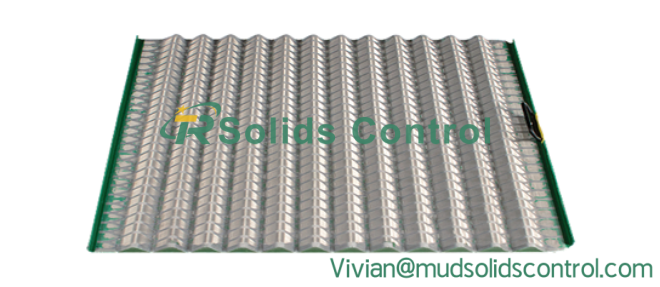
4. Focus on Screen Compatibility
Always ensure that the shale shaker screen fits perfectly with your shale shaker brand and model (such as Mongoose, Derrick, Brandt, or FLC). Poorly fitted screens can lead to mud leakage, reduced efficiency, and equipment wear.
5. Balance Cost and Durability
High-quality shale shaker screens may cost more initially but provide longer service life and better performance. Investing in premium screens reduces downtime and overall operating expenses.
Conclusion
Choosing the right shale shaker screen for your operation requires balancing mesh size, screen type, drilling conditions, and cost efficiency. The correct selection ensures optimal solids control, better drilling fluid recovery, and longer equipment lifespan—making it a key factor in achieving sustainable, cost-effective drilling operations.
5 Common Shale Shaker Problems and How to Fix Them
Efficient solids control starts with a properly working shale shaker, the first line of defense in any drilling operation. However, even the best shale shakers can experience mechanical or operational issues that reduce performance. Understanding common shale shaker problems—and knowing how to fix them—helps ensure smooth drilling operations, optimal mud recovery, and reduced downtime.
1. Screen Blinding or Clogging
Problem: Drilling cuttings or sticky solids block the mesh openings, preventing proper fluid flow.
Solution:
Use appropriate shaker screen mesh sizes for the drilling fluid.
Clean or replace screens regularly.
Apply screen cleaners or pretensioned composite screens to minimize clogging.
2. Excessive Vibration or Imbalance
Problem: Uneven vibration leads to noise, screen damage, and poor solids separation.
Solution:
Check and tighten all bolts and fasteners.
Inspect the vibration motors for misalignment or worn bearings.
Ensure the shaker deck is level and balanced.
3. Mud Leakage Around Screens
Problem: Drilling mud escapes around the screen edges instead of passing through the mesh.
Solution:
Replace worn rubber sealing strips or gaskets.
Verify the screen tensioning device and tensioning assembly are properly adjusted.
Inspect deck surfaces for damage or corrosion.
4. Short Screen Life
Problem: Screens tear or wear out quickly, increasing maintenance costs.
Solution:
Use quality shaker screens made of stainless steel or composite materials.
Avoid overtightening the tensioning system.
Check for uneven deck vibration or improper installation.
5. Poor Solids Separation Efficiency
Problem: Too much solid material remains in the drilling fluid, reducing mud quality.
Solution:
Adjust the deck angle for better solids conveyance.
Check that screens are properly tensioned and aligned.
Maintain a consistent G-force for stable operation.
Conclusion
Most shale shaker problems can be avoided through regular inspection, proper maintenance, and the use of high-quality parts such as shaker screens, tensioning devices, and rubber strips. By addressing issues early, operators can improve solids control efficiency, extend equipment lifespan, and keep drilling operations running smoothly.
Shale Shaker Tensioning Assembly – Ensuring Secure Screen Installation for Efficient Solids Control
The shale shaker tensioning assembly is an essential component in drilling solids control equipment. Designed to firmly secure shaker screens to the shaker deck, the tensioning assembly ensures efficient separation of drill cuttings from drilling fluids. Without a reliable tensioning system, screens may loosen, causing fluid bypass, reduced solids removal efficiency, and unnecessary mud loss. By maintaining proper screen stability, the shale shaker tensioning assembly plays a key role in the overall performance of shale shakers.
Functions of a Shale Shaker Tensioning Assembly
Screen Stability – Keeps shaker screens firmly in position during vibration.
Efficient Solids Removal – Ensures all drilling fluids pass through the mesh for maximum filtration.
Leakage Prevention – Reduces the risk of drilling mud bypassing around the screens.
Extended Screen Life – Minimizes damage from uneven wear caused by loose fitting.
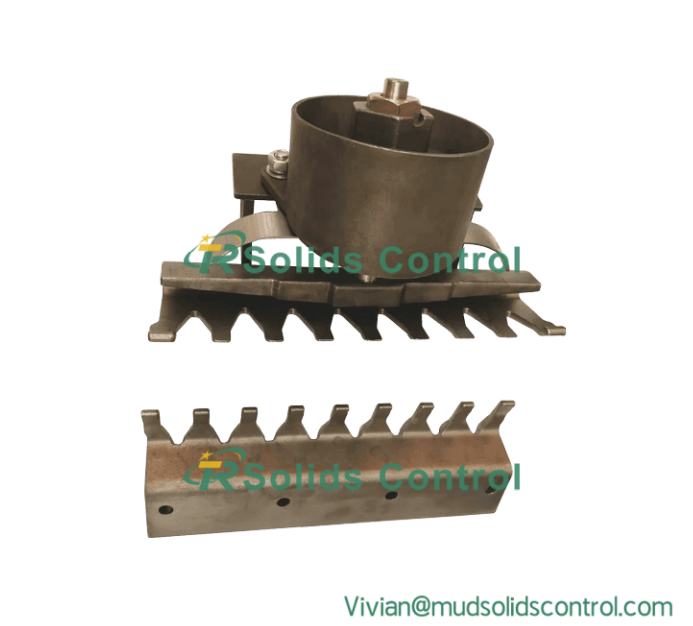
Benefits of High-Quality Tensioning Assemblies
Reliable Performance – Maintains consistent screen tension even under high G-force conditions.
Durability – Resistant to abrasion, vibration, and exposure to drilling fluids.
Easy Maintenance – Allows quick installation and replacement of screens.
Cost Efficiency – Reduces downtime and improves overall drilling productivity.
Conclusion
A shale shaker tensioning assembly may seem like a small component, but it is critical for reliable solids control operations. By keeping shaker screens secure, preventing mud loss, and improving separation efficiency, this assembly ensures better drilling performance and reduced operational costs. For long-lasting and stable performance, choosing a high-quality tensioning assembly is essential for any shale shaker system.
Shaker Screen Tensioning Device – Key Component for Reliable Shale Shaker Performance
A shaker screen tensioning device is one of the most important parts of a shale shaker, ensuring that screens are held firmly in place for efficient solids separation. Without proper screen tensioning, drilling fluids can bypass the screen mesh, leading to poor solids control, higher mud loss, and reduced shaker efficiency. By keeping screens tightly secured to the shaker deck, the shaker screen tensioning device plays a vital role in reliable drilling operations.
Functions of a Shaker Screen Tensioning Device
Firm Screen Positioning – Prevents screen movement or looseness during vibration.
Improved Separation Efficiency – Ensures drilling fluids pass through the screen for maximum solids removal.
Leakage Prevention – Reduces mud bypass and improves fluid recovery.
Extended Screen Life – Prevents excessive wear and damage caused by improper fitting.
Benefits of High-Quality Tensioning Devices
Consistent Performance – Maintains stable screen tension even in high-G force shale shakers.
Durable Construction – Resistant to vibration, abrasion, and drilling fluids.
Easy Installation & Replacement – Saves time during screen changes.
Lower Operational Costs – Reduces downtime and prevents unnecessary screen replacements.
Conclusion
The shaker screen tensioning device may seem like a small accessory, but its role in shale shaker performance is critical. By keeping screens secure, preventing leaks, and ensuring efficient solids control, it directly improves drilling fluid management and reduces operational costs. For reliable and long-lasting performance, investing in high-quality shaker screen tensioning devices is essential for any drilling project.
Contact Us:TR Solids Control
Sales office:No.10 West of North 2nd Ring Road Xi’an City, Shaanxi Province.
Manufacture: No.2 Goods yard road Xianyang City, Shaanxi Province.
Tel:+86-29-86332919
Call:+86-15339143604
WhatsApp:+86-15339143604
E-mail:Vivian@mudsolidscontrol.com
Web:https://www.trjxsb.com/
Shale Shaker Rubber Strip – Essential Sealing Part for Solids Control Equipment
The shale shaker rubber strip is a critical sealing component used in drilling solids control systems. Installed between the shaker deck and shaker screens, rubber strips ensure proper sealing, prevent drilling fluids from bypassing the screens, and protect equipment from excessive wear. By maintaining efficient screen performance, shale shaker rubber strips directly contribute to reliable solids control, reduced mud loss, and extended service life of shaker parts.
Functions of a Shale Shaker Rubber Strip
Sealing Protection – Prevents drilling mud leakage between the screen and frame.
Improved Screen Efficiency – Ensures all drilling fluids pass through the screens for proper solids removal.
Vibration Absorption – Reduces screen damage caused by continuous vibration.
Longer Equipment Life – Minimizes wear on shaker screens and deck components.
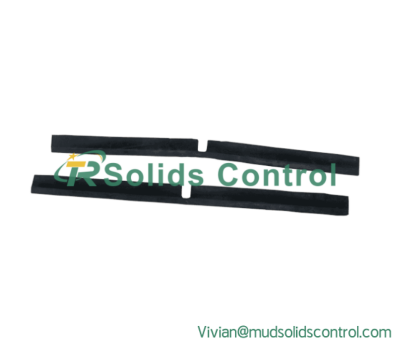
Benefits of High-Quality Rubber Strips
Durability in Harsh Conditions – Resistant to oil, heat, and chemical exposure.
Easy Replacement – Designed for quick installation and maintenance.
Cost Savings – Reduces drilling fluid loss and extends shaker screen lifespan.
Stable Performance – Maintains consistent sealing throughout drilling operations.
The shale shaker rubber strip is widely used in:
Oil & Gas drilling – Ensures reliable solids control in deep wells.
HDD (Horizontal Directional Drilling) – Improves mud recovery in trenchless projects.
Mining & Tunneling – Enhances slurry separation efficiency in heavy-duty environments.
Conclusion
A shale shaker rubber strip may seem like a small accessory, but it plays a big role in solids control performance. By ensuring a secure seal, reducing mud loss, and protecting shaker screens, it supports efficient drilling operations and cost savings. Choosing durable, high-quality rubber strips is essential for maximizing shale shaker efficiency and extending equipment life.
Contact Us:TR Solids Control
Sales office:No.10 West of North 2nd Ring Road Xi’an City, Shaanxi Province.
Manufacture: No.2 Goods yard road Xianyang City, Shaanxi Province.
Tel:+86-29-86332919
Call:+86-15339143604
WhatsApp:+86-15339143604
E-mail:Vivian@mudsolidscontrol.com
Web:https://www.trjxsb.com/
Beyond Oil & Gas: The Role of Shale Shakers in Geothermal and HDD Drilling
While the shale shaker is most commonly associated with oil and gas drilling, its role extends far beyond the energy sector. Today, shale shakers are equally vital in geothermal drilling and HDD (Horizontal Directional Drilling), where efficient solids control and drilling fluid recovery are essential for project success. By effectively separating cuttings from drilling fluids, shale shakers improve system performance, reduce environmental impact, and lower operational costs across multiple industries.
Shale Shakers in Geothermal Drilling
Geothermal wells often involve high-temperature and abrasive drilling conditions. A shale shaker helps maintain drilling mud quality by:
✔ Removing abrasive cuttings that can damage pumps and downhole tools.
✔ Supporting stable wellbore conditions for safer drilling.
✔ Extending the life of expensive drilling fluids in high-heat environments.
With the growing demand for renewable energy, geothermal operators rely on shale shakers to ensure efficient, safe, and cost-effective drilling.
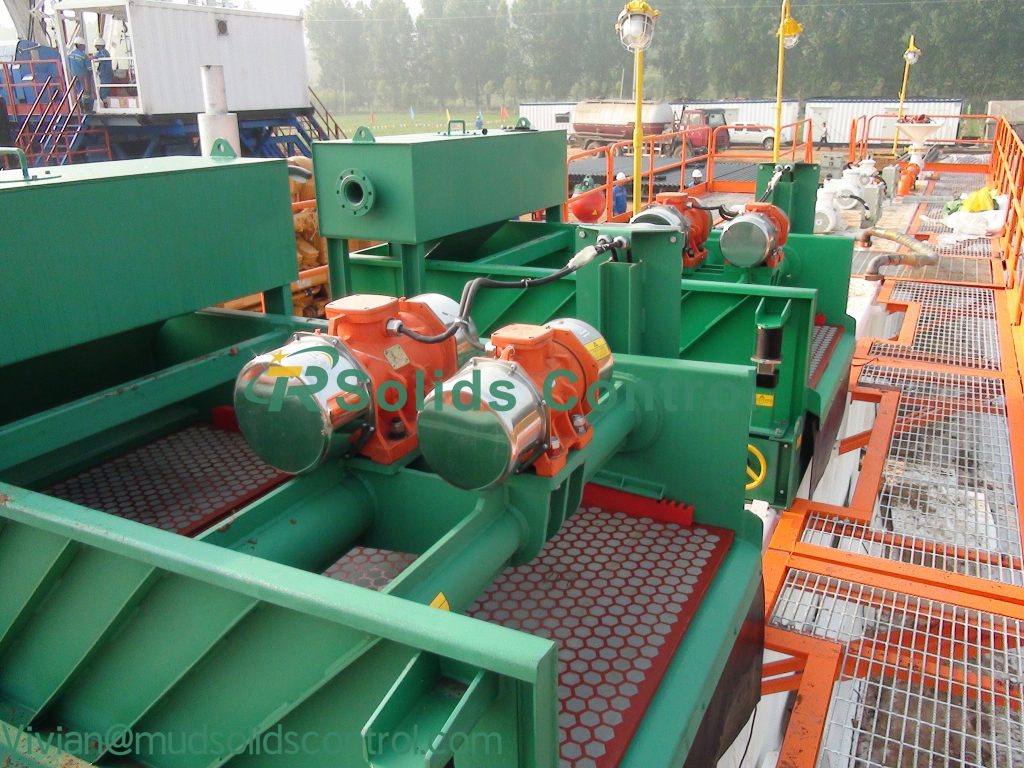
Shale Shakers in HDD Drilling
HDD projects, such as pipeline crossings and underground utility installations, require precise fluid management. Shale shakers in HDD operations provide:
✔ Efficient cuttings separation to keep drilling fluids clean.
✔ Reduced fluid loss for significant cost savings.
✔ Environmental compliance by minimizing waste discharge.
✔ Reliable performance in both large-scale and small directional drilling projects.
By maintaining cleaner drilling fluids, HDD contractors achieve faster drilling rates and reduce downtime.
Why Shale Shakers Matter Beyond Oilfields
From geothermal energy projects to HDD installations, shale shakers deliver the same core benefits: efficient solids control, reduced equipment wear, and optimized fluid management. Their adaptability makes them indispensable in modern drilling applications where precision and sustainability are top priorities.
The role of shale shakers in geothermal and HDD drilling highlights their versatility beyond oil & gas. By investing in high-performance shale shaker systems, contractors can achieve greater efficiency, lower costs, and improved environmental outcomes across a wide range of drilling industries.
Contact Us:TR Solids Control
Sales office:No.10 West of North 2nd Ring Road Xi’an City, Shaanxi Province.
Manufacture: No.2 Goods yard road Xianyang City, Shaanxi Province.
Tel:+86-29-86332919
Call:+86-15339143604
WhatsApp:+86-15339143604
E-mail:Vivian@mudsolidscontrol.com
Web:https://www.trjxsb.com/




